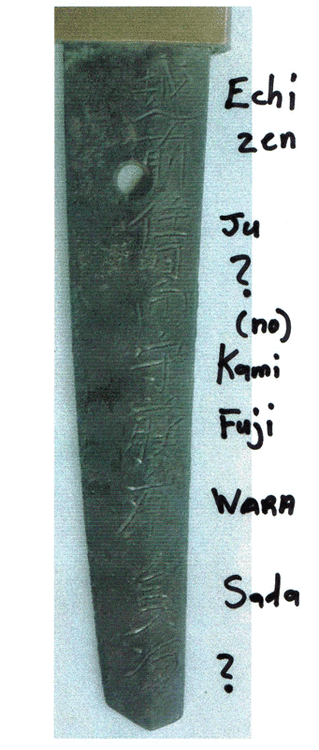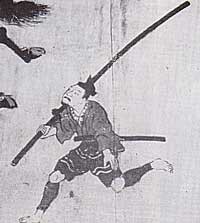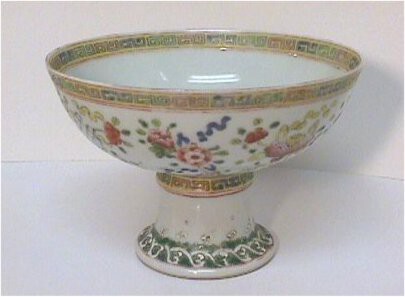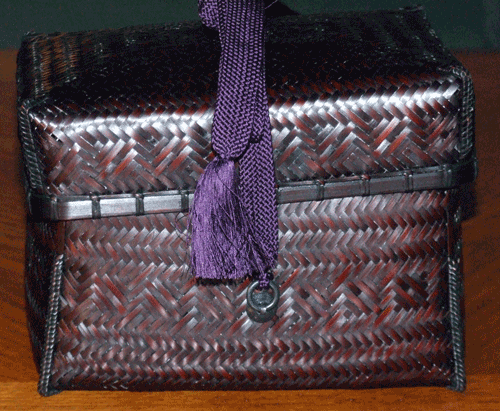-
Posts
8,372 -
Joined
-
Last visited
-
Days Won
20
Content Type
Profiles
Forums
Events
Store
Downloads
Gallery
Everything posted by John A Stuart
-
I have wondered the same thing on occasion. For example a few years ago I bought a tsuba for about $400US and just this month I have bought one I believe by the same maker of a common theme, similar quality and metalwork, but this was $800US. Now I paid it because I had an interest in it, but which was the real price? Did I get a great deal originally or have I paid too much this time? Of course desire determines price, what? John
-
Hi Lewis, It is not all a name. It means ' Place of residence Echizen, titled Lord of Hyaga, honourific Fujiwara, smith name Sadatsugu'. The SAD with number that Ludolf quoted are just the system used to codify the smiths in listform, like in a library. John
-
Hi Ludolf. I was not sure on the tsugu kanji. Here is the Fujishiro oshigata for this Sadatsugu. Looks damn close. John
-
Well, Lewis, That last missing kanji is crucial for ID. Without it I don't know the smith it is. So, then I can not look for oshigata that may verify it could be so and so smith. Someone may decipher it. I had thought Sadatsugu but am not sure. John PS Can you post pics of the rest of the blade? J.
-
Hi, Here is the breakdown. The (no) does not actually exist in the signature but is added by convention. The other kanji are too degraded for me. John
-
Hi LDR. I could only translate this part the other kanji I'm not sure. Echizen ju ? no Kami Fujiwara Sada? I flipped the pic so others can read it easier. John
-
Hi Martin, I have only seen a wrap with the trailing end pulled back through a previous wrap on shirosaya. John
-
Hi KM, Everyone is allergic to urushi which comes from a type of poison oak. Some are more allergic than others. It causes nasty contact dermititis and can take months to heal. Some people are naturally hypersensitive and some can become hypersensitised after repeated exposure. The lucky ones get a rash that with treatment goes away after a few days. It can be nasty stuff. Check with a few sayashi that use it and ask how to handle its' use safely. I did an experiment with the active oils in poison ivy late 60's and got it on my leg, 6 months of treatment and no swimming that summer. Rough time. John
-
Hi Mike, The jindachi was carried by attendants but these large shrine swords would have been impossible to wield. John
-
Hi , It certainly looks like a salmon, like a sockeye a Pacific breed. Do Japanese water have sockeye? What is dangling from its' mouth? An eel? John
-
Hi Milt, Yes, That is what I understand as well, the original polish then was left in the white. That is what I meant, that in battle or following one where the situation is still fluid the repairs would have been bandaids until a proper smith could repair them. No argument there. John
-
Hi Milt, KM, "ashigaru doing their own " sharpening " of swords" Milt I agree that battlefield dressing may be done but do you think it was just repairs in the interim until properly done? Smiths attached to a daimyo would be head of a whole group of people and could surely repair (polish) swords during lull periods, no? Of course there would be competant togishi and apprentices on the field as well. "therefore the Bugei and other companies bring swords on the market called "practical" katanas... however if you would test and compare such a sword with a proper Nihonto you would be very disappointed with the present day strength/sharpness... no matter what steel is used, how many times it was hammered/quenched etcetera... " KM, I wouldn't include these as shinsakuto. There are some modern day smiths who produce swords comparable to swords produced throughout history and in fact with modern homogenous steels, lamination techniques and quenching techniques that in respect to durability and sharpness may even surpass the old techniques. These are not nihonto so, 'nuff said. John
-
Hi KM, Not being an etymologist take this for what it is worth. Most European languages have roots in Aryan language. Swastika has Sanskrit roots. I think coincidence is the reason 'mandje' has that root 'man' which is the Japanese pronunciation of the kanji 'wan' in Chinese. I have heard it pronounced in another dialect 'hon'. Aryan had minor influence on far eastern roots. Hence my deduction. John http://www.crystalinks.com/swastika.html An informative site.
-
How is that going Brian? If you apply for #s and get no reply, does it mean those were not already taken? Thanks, John
-
Nigel, You may find this interesting. Over the years we have had many yachts come through this way, the attraction being the northwest passage. Copper clad 'Dagmar Ahn' under sail, a Norwegian fishing boat to a 4 masted bark as well as a host of sailed or motor vessels. Some make it and some don't. One fellow spent 3 years during the navigation seasons to try to make it and finally sold his 42 footer- cheap!! after going broke and losing 3 crews. Had one bunch of Irish sailors come into harbour and were absolutely crestfallen when told the nearest liquor store was 200 miles away. It can be quite an adventure. I've had 25 years sailing on the Arctic Ocean and there are sights here that very few people will ever see. Sailing under the northern lights through ice with a phosphorescent wake, wow! Thought I'd share, what a job. John
-
Hi Nigel, What arctic conditions? I just finished fueling an icebreaker here in a blizzard. The last fueling as the ice is getting pretty thick. Thank god it only took 6 1/2 hours of freezing hell. The key fret design is not necessarily based on 'man' but refers to straight line 90 degree designs that imitate old style keys. Actually 'fret' is sufficient by itself as in 'fret work'. 'Fret' comes from 'freter' which is a french verb 'to adorn'. You can see this design in a lot of old churches in the woodwork for example. It seems to me a very common embellishment in Asian artwork esp. pottery. John This is a Chinese piece. Ch'ing. It has simple 'key fret'
-
Hi Jeremy, I have not heard that about shinsakuto being less able to keep an edge. It would depend on the skill each particular sword was forged with, regardless of period. Hence wazamono ratings. Only a proper togishi can polish and thereby sharpen a sword. Although I have seen movies where polishing was done in the traditional manner by samurai previous to action. Some may have had this skill but probably a movie fantasy for the most part. Each clan had their smiths so it would hardly be necessary to sharpen ones own sword. John
-
Hi All, Just some more info regarding manji and its origins. According to the authorities the man symbol occured independently in various cultures about the same time that basket weaving started within those cultures. It is the right (90 degree) angled patterns produced in weaving that created notice of the symbol. Basket weaving was quite an achievment in primitive culture. In the pic below of a tea ceremony basket you can make out the pattern. Humble beginnings for a symbol that has so much significance throughout time, eh?
-
Hi Again, There is this one from the NMB links. http://www.nipponto.com/ E3000 and up. There are a few places that are in Europe and may be found in 'Links' above. John
-
Hi Michele, It is good to buy swords that have a respected certification by qualified institutions. It provides some comfort that the sword is legitimate. However in your first foray into nihonto markets it might be best to deal with an established dealer where you can take as much time as needed to research the sword and ask questions with no clock pushing you. Good luck, John Hi Michele, è buono da comprare le spade che hanno una certificazione rispettata dalle istituzioni qualificate. Fornisce una certa comodità che la spada è legittima. Tuttavia nel vostro primo foray nei mercati di nihonto potrebbe essere meglio trattare con un commerciante stabilito in cui potete occorrere tan tempo quanto stato necessario per ricercare la spada e per fare le domande senza l'orologio che li spinge. Buona fortuna, John
-
I just thought this info may be interesting. Swastika-萬 or 万 is 'man' in Japanese, right or left turning and explains 'manji'. John
-
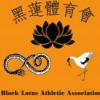
Sending swords to the U.S.
John A Stuart replied to Martin's topic in General Nihonto Related Discussion
Up here we have a tax that applies to services received eg. polish, restoration etc. and this applies to services done outside of the country. Free money for 'big brother', which I think is unconstitutional but you can't fight them unless you are willing to let them hold your stuff for a couple of years while litigation proceeds. To top it all off, here, it is illegal to sue the crown, which is who the government represents (not us). I'll stop bitching now but taxes really suck. John -

Sending swords to the U.S.
John A Stuart replied to Martin's topic in General Nihonto Related Discussion
Hi Martin, I have never had a problem with swords going into the states except one was damaged by a carrier but legally no problems. It is when I get them back that I have to jump through hoops to prove that they were mine originally. It helps when they are returning that there is a declaration that they have been serviced and being returned. Of course you have to have all the original documents to prove it to the customs on their return. So far no theft. John



